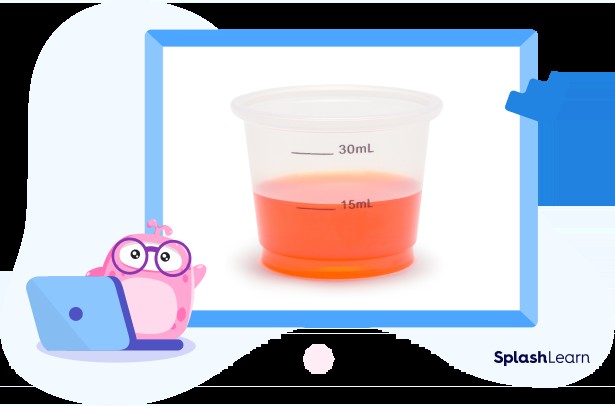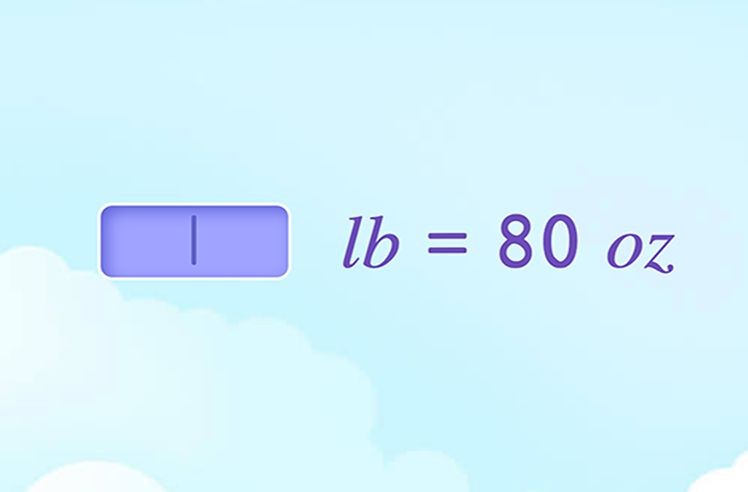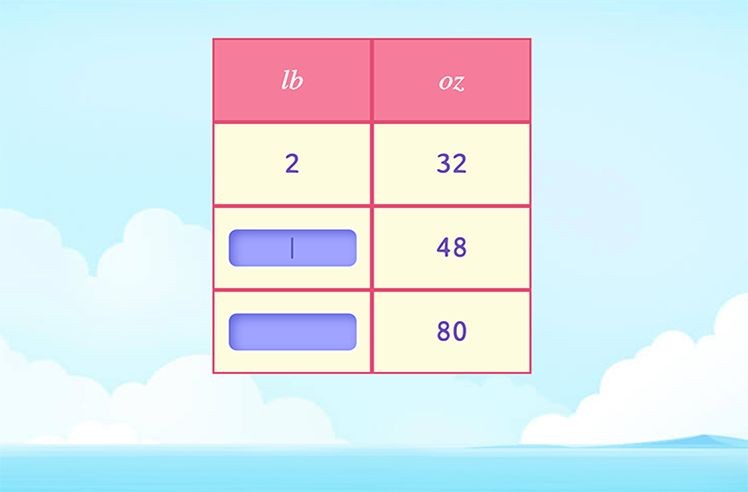In search of clear and concise information on fluid ounces? At HOW.EDU.VN, we understand the importance of accurate measurements in everyday life. A fluid ounce, a unit of liquid volume, is approximately 29.57 milliliters. This comprehensive guide will delve into fluid ounce conversions, practical applications, and key distinctions to ensure you’re well-versed in this essential measurement, plus, we’ll show you how our experts can help with measurement questions. Discover expert insights and practical solutions with us.
1. Understanding the Fluid Ounce: A Comprehensive Guide
A fluid ounce (fl oz) is a unit of volume commonly used to measure liquids. It’s essential in cooking, baking, and various industries. Understanding its value and how it converts to other units is crucial for accuracy. This article provides a comprehensive overview.
1.1. Defining the Fluid Ounce
A fluid ounce is a unit of volume in the imperial and U.S. customary systems of measurement. It is used to measure the volume of liquids. There are slight differences between U.S. and imperial fluid ounces:
- U.S. Fluid Ounce: Approximately 29.5735 milliliters (mL).
- Imperial Fluid Ounce: Approximately 28.4131 milliliters (mL).
1.2. Historical Context
The term “fluid ounce” dates back to when the volume was based on the space occupied by an ounce of another substance (like wine or water). Over time, standards have evolved, leading to the slight variations between the U.S. and imperial systems.
1.3. Practical Applications
Fluid ounces are commonly used in:
- Cooking and Baking: Measuring ingredients like water, milk, and oil.
- Beverages: Serving sizes of drinks like soda, juice, and alcoholic beverages.
- Cosmetics: Packaging and labeling liquid products like lotions and shampoos.
- Pharmaceuticals: Measuring liquid medications.
2. U.S. vs. Imperial Fluid Ounces: Key Differences
Understanding the distinction between U.S. and imperial fluid ounces is vital for accurate measurements. This section breaks down the key differences and provides conversion factors.
2.1. Volume Discrepancies
The primary difference lies in the actual volume each represents:
- U.S. Fluid Ounce: 29.5735 mL
- Imperial Fluid Ounce: 28.4131 mL
This difference, though small, can be significant in large-scale applications or precise formulations.
2.2. Conversion Table
Here’s a quick conversion table to help you switch between U.S. and imperial fluid ounces:
| Measurement | U.S. Fluid Ounce (mL) | Imperial Fluid Ounce (mL) |
|---|---|---|
| 1 Fluid Ounce | 29.5735 | 28.4131 |
| 2 Fluid Ounces | 59.147 | 56.8262 |
| 4 Fluid Ounces | 118.294 | 113.6524 |
| 8 Fluid Ounces (1 Cup) | 236.588 | 227.3048 |



2.3. Why the Difference Matters
Inaccurate measurements can lead to:
- Cooking: Altered taste or texture in recipes.
- Pharmaceuticals: Incorrect dosages, potentially affecting health.
- Manufacturing: Production errors and quality control issues.
2.4 Standard Conversion factors
- 1 US fluid ounce = 1.04084 Imperial fluid ounces
- 1 Imperial fluid ounce = 0.96076 US fluid ounces
3. How to Accurately Measure Fluid Ounces
Accurate measurement is crucial in cooking, pharmaceuticals, and manufacturing. Using the right tools and techniques ensures precision.
3.1. Essential Measuring Tools
- Liquid Measuring Cups: Ideal for larger volumes, often made of clear glass or plastic.
- Measuring Spoons: Best for small volumes, such as teaspoons and tablespoons.
- Graduated Cylinders: Used in scientific and pharmaceutical settings for precise measurements.
- Kitchen Scales: Helpful for converting fluid ounces to weight when needed (though not a direct measurement).
3.2. Step-by-Step Guide to Measuring
- Choose the Right Tool: Select the appropriate tool based on the volume you need to measure.
- Level Surface: Place the measuring tool on a level surface.
- Eye Level: Ensure your eye is at the same level as the liquid to avoid parallax errors.
- Fill Carefully: Pour the liquid slowly until it reaches the desired mark.
- Double-Check: Verify the measurement to ensure accuracy.
3.3. Tips for Accuracy
- Use Quality Tools: Invest in accurate and well-calibrated measuring tools.
- Read the Meniscus: For transparent liquids, read the bottom of the meniscus (the curve at the liquid’s surface).
- Avoid Estimation: Use tools with clearly marked measurements to avoid guesswork.
4. Fluid Ounces to Other Units: Conversions You Need to Know
Converting fluid ounces to other units is essential for various applications. This section provides detailed conversions for both U.S. and imperial systems.
4.1. Common U.S. Conversions
- To Milliliters (mL): 1 fl oz = 29.5735 mL
- To Cups: 1 cup = 8 fl oz
- To Pints: 1 pint = 16 fl oz
- To Quarts: 1 quart = 32 fl oz
- To Gallons: 1 gallon = 128 fl oz
- To Tablespoons: 1 fl oz = 2 tablespoons
- To Teaspoons: 1 fl oz = 6 teaspoons
4.2. Common Imperial Conversions
- To Milliliters (mL): 1 fl oz = 28.4131 mL
- To Cups: 1 cup = 10 fl oz (approximately)
- To Pints: 1 pint = 20 fl oz
- To Quarts: 1 quart = 40 fl oz
- To Gallons: 1 gallon = 160 fl oz
4.3. Conversion Calculators and Tools
Numerous online conversion calculators and apps can simplify these conversions. These tools are especially useful for complex calculations or when dealing with large numbers.
4.4. Practical Examples
- Recipe Scaling: Converting a recipe that calls for 6 fl oz to milliliters for international bakers.
- Beverage Preparation: Measuring 12 fl oz of juice into a glass.
- Medication Dosage: Converting a doctor’s recommendation of 1 fl oz of cough syrup to milliliters for accurate dosing.
5. Fluid Ounces vs. Ounces: Clearing Up the Confusion
It’s easy to mix up fluid ounces and ounces, but they measure different things. This section clarifies the difference to prevent errors.
5.1. What is an Ounce?
An ounce (oz) is a unit of mass or weight. It’s used to measure the weight of solids like flour, sugar, or meat.
5.2. Key Differences
| Feature | Fluid Ounce (fl oz) | Ounce (oz) |
|---|---|---|
| Measures | Volume of liquids | Weight/Mass |
| Common Usage | Liquids | Solids |
| Metric Equivalent | Milliliters (mL) | Grams (g) |
5.3. Why the Confusion?
The terms are similar and sometimes used interchangeably in everyday conversation, leading to confusion. However, in precise contexts, such as cooking, science, or medicine, using the correct unit is essential.
5.4 Additional Information
- 1 ounce = 28.3495 grams
6. Real-World Examples of Fluid Ounce Usage
Understanding how fluid ounces are used in everyday scenarios can reinforce their importance.
6.1. Cooking and Baking
Recipes often specify liquid ingredients in fluid ounces. For example, a cake recipe might call for 8 fl oz of milk or 4 fl oz of oil.
6.2. Beverage Industry
Serving sizes for drinks are commonly measured in fluid ounces. A standard can of soda is often 12 fl oz.
6.3. Cosmetics and Personal Care
Liquid products like shampoo, conditioner, and lotion are often sold in bottles labeled with fluid ounces. A travel-sized shampoo bottle might contain 3 fl oz.
6.4. Pharmaceuticals
Liquid medications, such as cough syrup or liquid antibiotics, are prescribed in fluid ounces or milliliters. Accurate measurement is critical for proper dosage.
6.5. Manufacturing and Industry
In industries that involve mixing or processing liquids, fluid ounces are used to maintain precise proportions and ensure product quality.
7. Practical Tips and Tricks for Working with Fluid Ounces
Here are some practical tips to help you work with fluid ounces more effectively.
7.1. Quick Conversions to Remember
- 1 cup = 8 fl oz (U.S.)
- 1 pint = 16 fl oz (U.S.)
- 1 quart = 32 fl oz (U.S.)
- 1 fl oz ≈ 30 mL (approximate)
7.2. Using Kitchen Scales for Conversions
If you don’t have measuring cups or spoons, you can use a kitchen scale to estimate fluid ounces based on weight. Keep in mind that this is an approximation, as the weight of a fluid ounce varies depending on the liquid.
7.3. Mobile Apps and Online Tools
Take advantage of mobile apps and online tools that offer quick and accurate conversions. These tools can be especially helpful when you need to convert between multiple units or perform complex calculations.
8. The Role of Experts in Measurement Accuracy
When precision is paramount, consulting experts is invaluable. Professionals in various fields rely on accurate measurements to ensure quality, safety, and consistency.
8.1. In the Culinary Arts
Chefs and bakers depend on precise measurements to create consistent and delicious recipes. Expert chefs often have years of experience and specialized tools to ensure accuracy.
8.2. In the Pharmaceutical Industry
Pharmacists and pharmaceutical scientists must measure ingredients with extreme precision to formulate medications that are safe and effective. Errors in measurement can have serious consequences for patient health.
8.3. In Manufacturing
Manufacturers rely on accurate measurements to maintain product quality and consistency. Expert technicians and engineers use calibrated instruments and precise techniques to ensure that products meet required specifications.
8.4. Accessing Expert Advice
For specialized questions or complex measurement challenges, consider consulting with experts in the relevant field. Professionals can provide valuable insights and guidance to ensure accuracy and avoid costly errors.
8.5 Getting Expert Help at HOW.EDU.VN
At HOW.EDU.VN, we offer access to a network of expert PhDs ready to assist with any measurement challenges you may encounter. Whether you’re in the culinary arts, pharmaceuticals, manufacturing, or any other field requiring precision, our experts can provide the guidance and support you need. Contact us today to connect with an expert and ensure the accuracy of your measurements.
9. Common Mistakes to Avoid When Measuring Fluid Ounces
Avoiding common mistakes ensures accuracy in your measurements.
9.1. Using the Wrong Measuring Tool
Using a dry measuring cup for liquids, or vice versa, can lead to inaccurate measurements. Always use the appropriate tool for the substance you’re measuring.
9.2. Not Leveling the Measuring Tool
Placing the measuring tool on an uneven surface can cause the liquid to be misaligned, resulting in an incorrect measurement.
9.3. Ignoring the Meniscus
When measuring transparent liquids, always read the measurement at the bottom of the meniscus.
9.4. Confusing Fluid Ounces with Ounces
Remember that fluid ounces measure volume, while ounces measure weight. Using them interchangeably will result in significant errors.
10. Advanced Techniques for Precise Fluid Ounce Measurement
For professionals and enthusiasts who require the highest level of accuracy, advanced measurement techniques are essential.
10.1. Using Pipettes and Burettes
Pipettes and burettes are specialized tools used in laboratories and scientific settings for dispensing precise volumes of liquids. These tools are calibrated to deliver accurate measurements down to the milliliter or microliter level.
10.2. Calibrating Measuring Tools
Regularly calibrating your measuring tools ensures that they remain accurate over time. Calibration involves comparing the tool’s measurements against a known standard and making adjustments as needed.
10.3. Controlling Temperature
Temperature can affect the volume of liquids, so it’s important to control the temperature when measuring fluids for critical applications.
11. The Future of Measurement: Innovations and Trends
The field of measurement is constantly evolving, with new technologies and techniques emerging to improve accuracy and efficiency.
11.1. Digital Measuring Tools
Digital measuring cups and scales offer precise measurements and often include built-in conversion functions.
11.2. Automated Measurement Systems
In industrial settings, automated measurement systems use sensors and robotics to measure and dispense liquids with high precision and speed.
11.3. Nanotechnology
Nanotechnology is enabling the development of new sensors and measurement tools that can measure volumes at the nanoscale level.
12. Fluid Ounce FAQs: Your Questions Answered
Here are some frequently asked questions about fluid ounces to help you master this unit of measurement.
12.1. How Many Milliliters Are in a Fluid Ounce?
- 1 U.S. fluid ounce is approximately 29.5735 milliliters.
- 1 Imperial fluid ounce is approximately 28.4131 milliliters.
12.2. How Many Fluid Ounces Are in a Cup?
- There are 8 fluid ounces in a U.S. cup.
- There are approximately 10 fluid ounces in an Imperial cup.
12.3. What’s the Difference Between a Fluid Ounce and an Ounce?
A fluid ounce measures volume, while an ounce measures weight.
12.4. How Can I Convert Fluid Ounces to Other Units?
Use conversion factors, online calculators, or mobile apps to convert fluid ounces to other units like milliliters, cups, pints, quarts, and gallons.
12.5. Why Do U.S. and Imperial Fluid Ounces Differ?
The difference stems from historical standards and the different liquids used to define the units (wine vs. water).
12.6. Is It Okay to Use Fluid Ounces and Ounces Interchangeably?
No, using them interchangeably can lead to significant errors.
12.7. How Can I Improve My Measurement Accuracy?
Use the right measuring tools, ensure a level surface, read the meniscus correctly, and double-check your measurements.
12.8. What Are Some Common Uses of Fluid Ounces?
Fluid ounces are commonly used in cooking, baking, the beverage industry, cosmetics, pharmaceuticals, and manufacturing.
12.9. Are There Mobile Apps for Fluid Ounce Conversions?
Yes, numerous mobile apps and online tools offer quick and accurate fluid ounce conversions.
12.10. When Should I Consult an Expert About Fluid Ounce Measurements?
Consult an expert for specialized questions, complex measurement challenges, or when precision is paramount, such as in pharmaceuticals or manufacturing.
13. Conclusion: Mastering the Fluid Ounce
Understanding and accurately measuring fluid ounces is essential in many aspects of life, from cooking and baking to pharmaceuticals and manufacturing. By mastering the concepts and techniques discussed in this guide, you can ensure precision, consistency, and quality in your endeavors.
Need expert advice on fluid ounce measurements or any other complex topic? Contact the PhD experts at HOW.EDU.VN. We’re here to provide the guidance and support you need to succeed.
Address: 456 Expertise Plaza, Consult City, CA 90210, United States
WhatsApp: +1 (310) 555-1212
Website: HOW.EDU.VN
Don’t let measurement uncertainties hold you back. Reach out to how.edu.vn today and unlock the power of expert knowledge.
